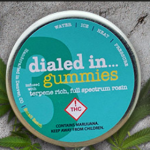Cannabis Marketing Starts And Stops With Customer Service
This entry was posted on November 17, 2022 .

Of all the do’s and don’ts to successfully market a cannabis company, consistent, complete, and committed customer service is the most important element.
Digital marketing, including social media campaign development and deployment, can be extremely critical to effective marketing. But, it needs to build on a solid customer service program supporting it to fill the bill. In the cannabis world, the complexities of constantly-evolving regulations, ever-expanding product/growing knowledge, and increasing product selection make customer service excellence even more vital.
Typically, cannabis companies define marketing success based on revenue growth and total number of customers. If numbers are increasing in both areas, the general presumption is that marketing is working. However, what most companies DON’T do is figure out how many customers are exiting while all this is going on, or determine how to retain them before they jump to a competitor.
The best way to keep those customers is to provide such consistent, stellar customer service that they become loyal and want to stay. Of course, no matter what companies do, some people will jump ship for a better perceived deal. Engendering customer loyalty with this crowd may be impossible. But it’s still good to know who’s leaving, why, and what could be done to prevent the exit.
The following are fundamental customer service programs and policies to put into place:
1. Develop and deploy time-honored qualities to make customers trust, like, and respect you. While digital marketing and whizbang technology can assist in doing this, neither is a substitute for old-fashioned, personalized relationship-building. At its core, this evokes the Golden Rule: Essentially, treat others the way you want to be treated. Be friendly, inviting, engaging, truthful, knowledgeable, and competent in everything you do via personal interactions (both in-store and phone) and digital marketing. The aim is to make customers (and prospects) feel heard, acknowledged, valued, and confident that their questions, concerns, and requests are fully addressed.
2. Communicate/offer support in the way each customer prefers. Optimally, incoming channels should include live phone support, email, text, and live chat/chatbots. For marketing and informational outreach, discover how, how often, and around what topics people want the outreach. Find out customer preferences, then reach out accordingly across all marketing efforts.
You might be surprised how many people prefer live phone support to digital channels, so it’s important to prioritize this option—even though it often requires a substantive commitment of resources and money. One of the surest ways to alienate folks is to relegate them to digital channels in the name of “efficiency.” When they need help, especially in an urgent situation, make the phone call option front and center. They may try other avenues first (including live chat), but make sure they know a phone call is doable if needed—without having to sit on hold for extended periods. Even Amazon, who tries hard to disguise their phone contact option so that people will use digital channels, offers live phone support. You just have to drill down through several layers to get there.
When it comes to reaching out, a one-size-fits-all policy can be dangerous. Some consumers want (or aren’t offended by) daily/weekly communications to update, sell, offer special deals, etc. Others want less frequency and/or are very selective about desired topics.
3. Provide robust, interactive platforms that educate, engage, and empower decision-making. For example, point-of-purchase displays and materials, along with product labels where feasible, should offer QR codes or Augmented Reality access where people can go to get more information, ask questions/get answers, and offer their preferences on everything from product choices to communication channel(s) and frequency. It goes without saying that the website merits frequent updating with current and expanded information to enable consumers to access the latest and greatest. Additionally, a QR code included with an emailed newsletter or other concise communique can provide a convenient to find more information as desired. You may have noticed recently that more TV commercials are showing QR codes on-screen for in-the-moment access to additional resources.
4. Make product presentation (including branding/messaging) as professional and high-quality as the product itself. This covers everything from product labels to the website, and is another extremely important form of customer service. Clear, complete, and accurate communication that can be easily found and read is crucial, along with being grammatically correct and error-free. This is important to instill consumer confidence in your company, to reinforce that you’re committed to quality and accuracy, are detail-oriented, and to ensure customers have the best possible buying experience in everything from product selection to full understanding of what they’re buying.

 Custom Labels
Custom Labels  Custom Beverage Labels
Custom Beverage Labels  Custom Lip Balm Labels
Custom Lip Balm Labels  Custom Warning & Safety Labels
Custom Warning & Safety Labels  Perfume Bottle Labels
Perfume Bottle Labels  Bumper Stickers
Bumper Stickers  Custom Prop 65 Warning Labels
Custom Prop 65 Warning Labels  Custom Stickers
Custom Stickers